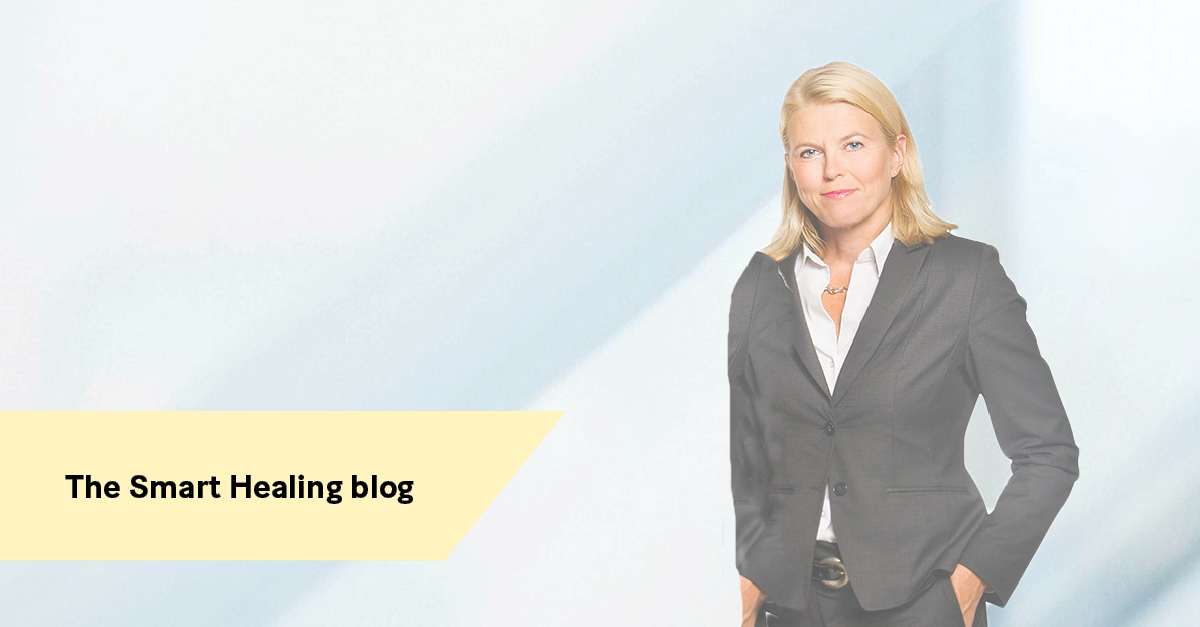New ways to prevent the recurrence of benign bone tumors
Benign bone tumors, or bone cysts, develop when cells grow and excessively divide. The condition is more frequent in children and young adults than in adults. We turn to Mervi Kukkonen, who is managing the benign bone tumor portfolio of Bonalive Biomaterials. With 30 years of experience in working with orthopedic surgeons, we ask about her viewpoints on the topic of benign bone tumor surgery.

Can you tell us something about benign bone tumors?
Benign bone tumors are often recognized when the patient experiences pain, rest pain or even fractures due to a tumor in the bone. These bone cysts can basically appear anywhere in the skeleton and there are different types of benign bone tumors, also referred to as tumorlike lesions.1 Unlike malign bone tumors, benign tumors do not spread through metastases. But if the benign bone tumor is very large and shows signs of expansion, surgery is usually seriously considered.
What is the current standard of care?
The current standard of care varies but when surgery is involved, the site is emptied and debrided to remove the benign tumor material. Thermoablation and embolization is sometimes used instead of or before surgery.
The most common surgical intervention is marginal extracapsular excision using a high-speed drill in combination with cavity filling.2 Bank bone (allograft), the patient’s own bone (autograft), or synthetic bone graft substitutes are commonly used to fill the cavity. Harvesting autograft often involves donor site pain postoperatively, and availability of autograft is often limited. Most importantly, when surgically treating benign bone tumors, the likelihood of recurrence of the tumor must be minimized.
How common is recurrence of benign bone tumors?
It is very common that benign bone tumors recur at the same location within a few months or even years after removal, and especially in an unmatured, growing skeleton.
Video: Prof. Ilkka Helenius talks about how to reduce the recurrence of benign bone tumors.
Apart from recurrence, what are the challenges in benign bone tumor surgery?
The cortex surrounding the area where the benign bone tumor has been removed is often very thin, perhaps even as thin as an eggshell. When filling the cavity, it is of high importance that the chosen material is characterized by slow resorption.
What are the bone cavity filling options for benign bone cysts?
There are several options. As mentioned, autograft, allograft or synthetic materials can be used. In Finland, the use of bioactive glass S53P4 (Bonalive® granules) has become common over the past few years. Bioactive glass S53P4 has been successfully used in benign bone tumor surgery: aneurysmal bone cysts (ABCs), simple bone cysts (UBCs) and enchondromas. In the retrospective study of Syvänen et al. 20183 the recurrence rate was much lower for patients treated with bioactive glass compared to figures reported in the literature, with 2 years follow up. This is a remarkable finding from the Finnish research group.
From Syvänen et al. 2018:
“In a literature review, the recurrence rate of the 690 ABCs treated with curettage with or without bone graft was 31%. In our small series of 18 patients treated with bioactive glass, two patients developed recurrence (11%).”
Bioactive glass S53P4 absorbs slowly through ion exchange and also provides additional benefits for maintaining bone volume at the site of implantation for a longer period of time. Over time, new healthy bone replaces the glass granules. Thus, the granules are gradually replaced with new bone tissue. The rate of resorption of the granules is slightly slower than the rate of bone formation. In this way, there is no empty space left for any recurrent tumors due to too rapid resorption.
What are the core properties that surgeons seek in a bone graft material when performing benign bone tumor surgery?
The bone graft should, of course, be easy to handle and keep its volume over time, meaning it should not shrink after implantation. Another topic is price. Autologous bone is often an affordable option but not always available, especially in pediatric patients. In pediatric cases, Bonalive® bioactive glass does not interfere with the normal bone growth, which is another important core property.3
How do you think benign bone tumor surgery will develop in the future?
The international meetings are very important, for instance the EPOS congress held every year, next time in Copenhagen 2022. International collaboration and research are key to further developing better solutions for this important topic.
There is also active ongoing research regarding the use of bioactive glass S53P4 in the treatment of benign bone tumors. This will give even more confidence to surgeons who seek new options for patient care.
Read more:
Bonalive® bioactive glass in benign bone tumor surgery
Smart Healing Center – the surgeon to surgeon platform
References:
- Lam Y. Bone Tumors: Benign Bone Tumors. FP Essent. 2020 Jun;493:11-21.
- Nogueira Drumond JM. BENIGN BONE TUMORS AND TUMOR-LIKE BONE LESIONS: TREATMENT UPDATE AND NEW TRENDS. Rev Bras Ortop. 2015;44(5):386-390.
- Syvänen, J., et al. “Treatment of Aneurysmal Bone Cysts with Bioactive Glass in Children.” Scandinavian Journal of Surgery, vol. 107, no. 1, Mar. 2018, pp. 76–81.